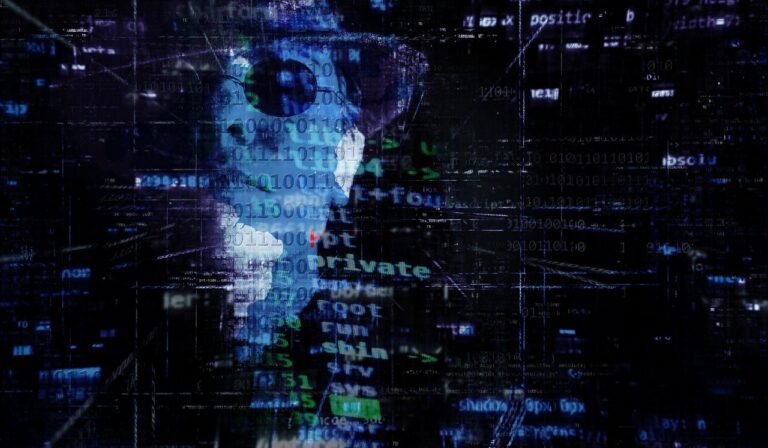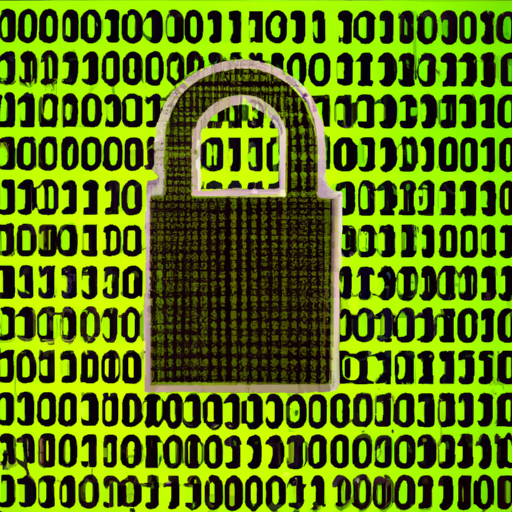What Is Cyber Espionage?
Cyber espionage, a term that has gained significant attention in recent years, refers to the covert act of obtaining confidential information and classified data from organizations or individuals using computer networks. In this digital era, where the reliance on technology is ever-increasing, the threat of cyber espionage looms large. It involves skilled hackers infiltrating systems to steal valuable data, from trade secrets to government classified information, often with motives ranging from financial gain to political maneuvering. This article aims to provide a comprehensive understanding of cyber espionage by exploring its origins, methods employed, and the potential impacts it can have on individuals, organizations, and even nations.
What is Cyber Espionage?
Definition of Cyber Espionage
Cyber espionage refers to the covert and unauthorized use of digital technology to gain access to confidential information and valuable data. It involves the infiltration and surveillance of computer networks and systems to steal information for various purposes, such as espionage, sabotage, economic gain, or political advantage. This form of cybercrime is typically carried out by state-sponsored actors, criminal organizations, or individuals with advanced technical skills.
Overview of Cyber Espionage
The practice of cyber espionage has been around since the early days of the internet, but it has become more prevalent and sophisticated in recent years. With the increasing digitization of data and the growing reliance on technology in all aspects of life, the potential for cyber espionage has also expanded. Today, cyber espionage poses a significant threat to national security, the economy, and individuals’ privacy.
Importance and Impact of Cyber Espionage
Cyber espionage has far-reaching implications for governments, businesses, organizations, and individuals. It can undermine national security by stealing classified information, military strategies, and sensitive defense technologies. Economically, cyber espionage can lead to industrial espionage, where valuable trade secrets, research, and development plans are stolen to gain a competitive edge. This type of espionage can cripple industries and damage economies.
Additionally, cyber espionage can violate individuals’ privacy and compromise their personal information. Breaches of personal data can lead to identity theft, financial loss, and reputational damage. The impact of cyber espionage can be devastating and long-lasting, making it crucial for individuals and organizations to understand and address this growing threat.
Methods of Cyber Espionage
Phishing Attacks
Phishing attacks involve the use of deceptive emails, websites, or digital communications to trick individuals into revealing sensitive information, such as login credentials or financial details. These attacks often mimic legitimate organizations or individuals, making it difficult for individuals to detect the malicious intent behind the communication.
Malware and Ransomware
Malware and ransomware are malicious software programs designed to infiltrate computer systems and networks without authorization. Malware can steal data, disrupt operations, or provide unauthorized access to cybercriminals. Ransomware, on the other hand, encrypts valuable data and demands a ransom payment in exchange for its release.
Social Engineering
Social engineering relies on psychological manipulation to deceive individuals into divulging confidential information. It often involves exploiting human trust and weaknesses to gain access to sensitive data or systems. Social engineering techniques can include impersonation, pretexting, or baiting to deceive unsuspecting individuals.
Keylogging
Keylogging involves tracking and recording keystrokes on a computer keyboard. Cybercriminals use this method to capture login credentials, passwords, and other sensitive information without the user’s knowledge. Keyloggers can be either software-based or hardware-based and can be difficult to detect without the proper security measures in place.
Zero-day Exploits
Zero-day exploits target vulnerabilities in software or systems that are not yet known to the vendor or the general public. Cybercriminals exploit these vulnerabilities before a patch or security update is available, giving them an advantage in infiltrating systems and compromising data.
Advanced Persistent Threats (APTs)
APTs are long-term and highly targeted cyber attacks. They involve meticulous planning, advanced techniques, and ongoing monitoring of the target’s systems and networks. APTs often go undetected for extended periods, allowing cybercriminals to gather intelligence and access sensitive information over time.
Common Targets of Cyber Espionage
Government and Military Organizations
Government and military organizations are prime targets for cyber espionage due to their valuable and sensitive information. Attackers may seek classified information, defense strategies, diplomatic communications, or military technologies. State-sponsored cyber espionage is often motivated by political, economic, or military objectives.
Corporations and Businesses
Corporations and businesses possess valuable intellectual property, trade secrets, and financial data. Cybercriminals may target large companies to gain a competitive advantage, steal research and development plans, or extort money through ransomware attacks. Smaller businesses are also vulnerable as they often lack the same level of cybersecurity resources as larger organizations.
Research Institutions and Academic Organizations
Research institutions and academic organizations are attractive targets for cyber espionage due to their cutting-edge research, technological advancements, and intellectual property. Attackers may seek scientific research, unpublished studies, or patented technologies to gain a competitive edge or sell to rival organizations.
Journalists and Media Outlets
Journalists and media outlets often possess sensitive information, sources, and confidential data. Cyber espionage targeting journalists can have severe implications for press freedom and democracy. By compromising the privacy of journalists, cybercriminals can hinder investigative reporting, expose sources, or manipulate information for personal gain or political reasons.
Motivations Behind Cyber Espionage
Economic Espionage
Economic espionage involves stealing proprietary information, trade secrets, and intellectual property to gain a competitive advantage. This motivation is often driven by the desire to acquire lucrative business strategies, manufacturing processes, or technological innovations without investing in research and development.
Political Espionage
Political espionage aims to obtain confidential information related to government policies, diplomatic communications, or classified intelligence. Cybercriminals may engage in political espionage to gather information for political leverage, gain advanced knowledge of policy decisions, or disrupt the stability of adversary nations.
Military Espionage
Military espionage focuses on obtaining sensitive military intelligence, defense strategies, or military technologies. State-sponsored actors engage in military espionage to gain a tactical advantage, monitor the capabilities of rival nations, or undermine their adversaries’ military capabilities.
Ideological Espionage
Ideological espionage targets individuals, groups, or organizations based on their beliefs, ideologies, or affiliations. Cybercriminals may engage in ideological espionage to gather intelligence, discredit opposing ideologies, or influence public opinion to further their own agenda.
Competitive Advantage
In some cases, the motivation behind cyber espionage is driven by the desire to gain a competitive advantage in business or industry. Cybercriminals may target rival companies to steal trade secrets, research findings, or customer databases to gain a foothold in the market or damage the reputation of their competitors.
Signs and Indicators of Cyber Espionage
Unusual Network Activity
Unexplained spikes in network traffic, unusual data transfers, or suspicious connection requests can indicate the presence of cyber espionage. Monitoring network activity and implementing intrusion detection systems can help identify such anomalies.
Data Breaches and Unauthorized Access
The sudden occurrence of data breaches, unauthorized access to systems or databases, or the presence of unknown user accounts can be indicators of cyber espionage. Organizations should regularly review access logs and implement multifactor authentication to prevent unauthorized access.
Unexplained Loss of Intellectual Property
If valuable intellectual property or trade secrets suddenly become public or are discovered in the possession of unauthorized individuals or organizations, it may indicate cyber espionage. Regular audits and robust data protection measures can help prevent such losses.
Abnormal System Behavior
Signs of abnormal system behavior, such as unexplained crashes, slow performance, or frequent system errors, may suggest the presence of malware or a cyber intrusion. Implementing endpoint detection and response solutions can help detect and mitigate such threats.
Unexpected File Modifications
Unauthorized changes or modifications to critical system files, programs, or configurations can be indicative of a cyber espionage attempt. Regular file integrity checks and version controls can help identify such alterations and prevent further damage.
Case Studies of Cyber Espionage
The Stuxnet Attack
The Stuxnet attack was a highly sophisticated cyber weapon believed to have been developed jointly by the United States and Israel. It targeted Iran’s nuclear program by infiltrating the computer systems of a uranium enrichment facility, causing centrifuges to malfunction and delay Iran’s nuclear ambitions.
Operation Aurora
Operation Aurora was a series of cyber attacks conducted against several large corporations in 2009. The attacks, attributed to China, targeted the intellectual property and trade secrets of companies in the technology and defense sectors. This cyber espionage campaign brought attention to the increasing threat posed by state-sponsored cyber attacks.
Titan Rain
Titan Rain was a cyber espionage campaign discovered in 2003 that targeted various U.S. government agencies, defense contractors, and businesses. The attacks, believed to be carried out by Chinese hackers, sought sensitive military and defense-related information. Titan Rain highlighted the vulnerability of government and military systems to cyber espionage.
Moonlight Maze
Moonlight Maze was an extensive cyber espionage operation discovered in the late 1990s, targeting U.S. defense systems and research institutions. The attacks, traced back to Russia, aimed to gather sensitive military and technological information. Moonlight Maze raised concerns about the growing capabilities of nation-state cyber espionage.
Equation Group
The Equation Group is an advanced cyber espionage group believed to be linked to the United States’ National Security Agency (NSA). It has been involved in various high-profile attacks, including targeting governments, organizations, and individuals worldwide. The sophisticated techniques and tools used by the Equation Group illustrate the increasing sophistication of cyber espionage operations.
Preventing and Mitigating Cyber Espionage
Implementing Strong Cybersecurity Measures
Organizations can protect themselves from cyber espionage by implementing robust cybersecurity measures. This includes regularly updating software and systems, using strong passwords, encrypting sensitive data, and implementing firewalls and intrusion detection systems.
Educating and Training Employees
Organizations should provide comprehensive cybersecurity training to employees to raise awareness about the risks of cyber espionage. Training programs should cover topics such as recognizing phishing attacks, safe browsing habits, and reporting suspicious activities.
Monitoring and Detecting Suspicious Activities
Continuous monitoring of network traffic, system logs, and user activity helps identify and mitigate potential cyber espionage attempts. Intrusion detection systems, log monitoring tools, and security information and event management (SIEM) solutions can aid in detecting anomalous behavior.
Regular Security Audits and Risk Assessments
Regular security audits and risk assessments help identify vulnerabilities and weaknesses in an organization’s systems and processes. By conducting comprehensive assessments, organizations can proactively address potential security gaps and implement appropriate countermeasures.
Sharing Threat Intelligence
Collaboration and information sharing among organizations, industry groups, and government agencies can enhance the detection and prevention of cyber espionage. Sharing threat intelligence, best practices, and indicators of compromise enables a collective defense against cyber threats.
Maintaining Backup and Recovery Systems
Having robust backup and recovery systems in place helps organizations recover from cyber attacks, including those associated with cyber espionage. Regularly backing up critical data, implementing disaster recovery plans, and testing the restore process can minimize the impact of cyber espionage incidents.
International Laws and Agreements on Cyber Espionage
United Nations Convention on Cybercrime
The United Nations Convention on Cybercrime, also known as the Budapest Convention, is an international treaty aimed at harmonizing national legislation and improving cooperation among nations in combating cybercrime, including cyber espionage.
The Tallinn Manual
The Tallinn Manual is a comprehensive guide on the application of international law to cyber warfare and cyber security. It provides legal guidance on issues related to cyber espionage, including the attribution of cyber attacks and the protection of critical infrastructure.
The Wassenaar Arrangement
The Wassenaar Arrangement is a multilateral export control regime that regulates the export of dual-use technologies, including certain cybersecurity technologies. It aims to prevent the proliferation of technologies that could be used for malicious purposes, including cyber espionage.
Budapest Convention on Cybercrime
The Budapest Convention on Cybercrime is an international treaty focused on harmonizing national laws and improving international cooperation in combating cybercrime. It provides a framework for the criminalization of cyber espionage and the exchange of information and expertise among signatory countries.
Five Eyes Intelligence Alliance
The Five Eyes Intelligence Alliance is an intelligence-sharing partnership among the United States, the United Kingdom, Canada, Australia, and New Zealand. The alliance collaborates on cyber espionage and other intelligence activities to enhance national security and counter foreign threats.
The Future of Cyber Espionage
Emerging Technologies and Attack Vectors
As technology evolves, so do the tactics and techniques employed in cyber espionage. Emerging technologies such as artificial intelligence, quantum computing, and the Internet of Things (IoT) present new opportunities and challenges for cyber attackers. It is essential for organizations to stay abreast of emerging technologies and their associated security risks.
Increasing Sophistication and Complexity
Cyber espionage is expected to become more sophisticated and complex in the future, with attackers using advanced tools, techniques, and strategies. Machine learning, automation, and enhanced evasion techniques will make detection and attribution more challenging. Organizations must continuously enhance their cybersecurity defenses and stay ahead of evolving threats.
Response and Countermeasures
The response to cyber espionage requires a coordinated effort between governments, organizations, and individuals. International cooperation, information sharing, and the development of robust incident response capabilities are essential in mitigating the impact of cyber espionage. Additionally, investing in cybersecurity research and education will be critical in cultivating a skilled workforce capable of combating cyber threats.
Conclusion
Cyber espionage poses a significant threat to governments, organizations, and individuals worldwide. It encompasses various methods, targets, and motivations, making it a complex and evolving challenge. It is crucial for individuals, businesses, and governments to understand the nature of cyber espionage, implement robust cybersecurity measures, and collaborate to mitigate its impact. By staying vigilant, investing in cybersecurity, and staying informed, we can help protect ourselves and our critical systems from the damaging effects of cyber espionage.








